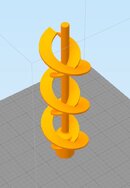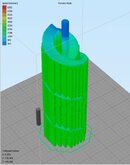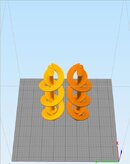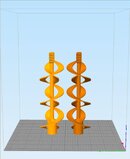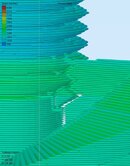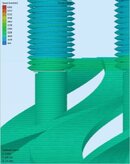Well I think it's awesome. If Vance can use whiffle balls I'm pretty sure just about anything would help in disrupting the flow enough to get a mix.... and honestly who cares. I get that there may be more efficient designs, but if I tie 3-4 of these together in an 18"-24" housing I'm pretty sure it'll work.
You might be right, a more efficient design could be shorter, but it also costs a lot more money. I don't think most people care about short....
You might be right, a more efficient design could be shorter, but it also costs a lot more money. I don't think most people care about short....



